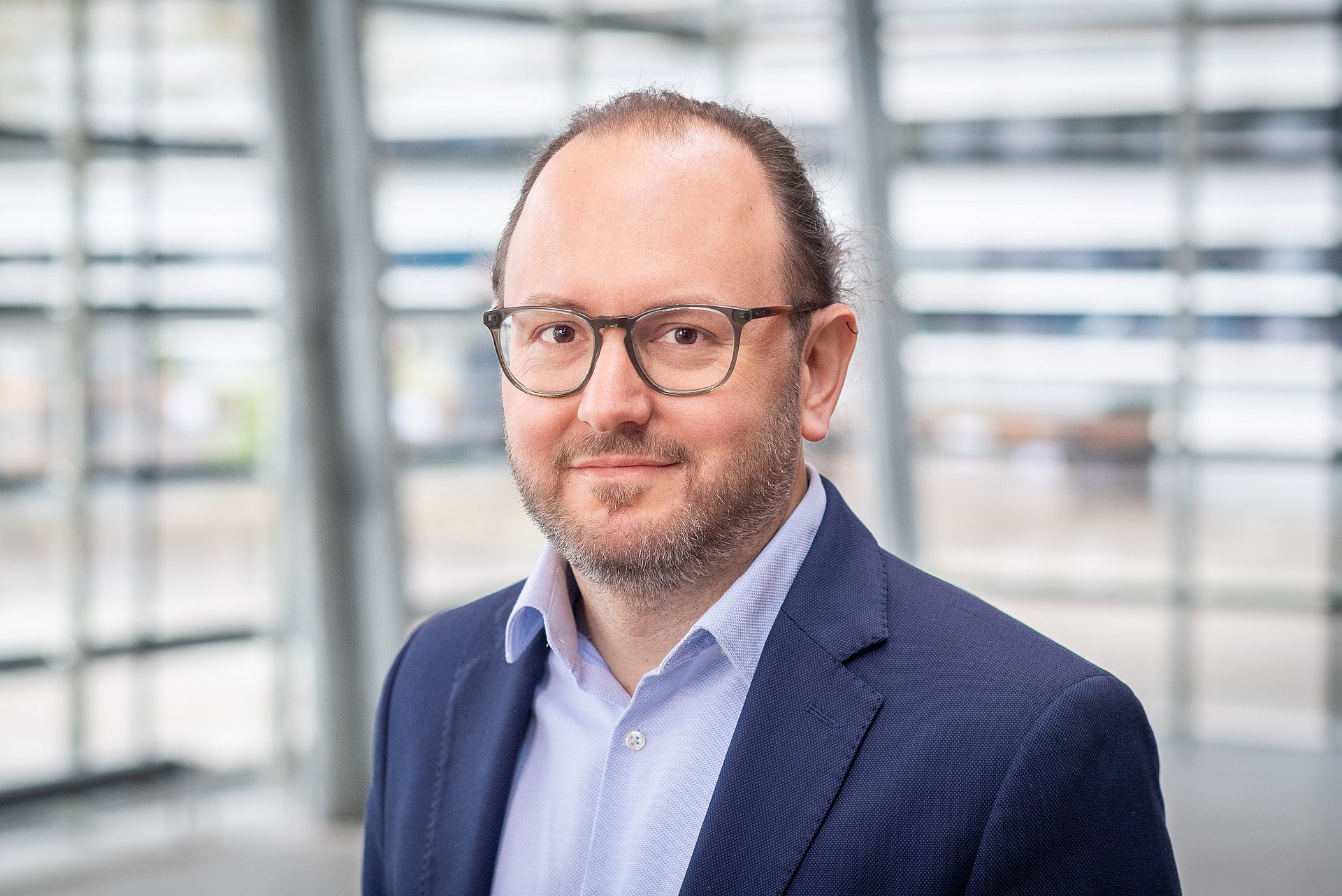NewIn: Can Dincer
Wearables: sensors for everyday life
Since December, Can Dincer, Professor of Sensors and Wearables for Healthcare, has been wearing a smartwatch himself. Like many commercially available wearables, it measures physical parameters such as blood oxygen levels, heart rate, sleep duration, and the distance covered during a run. In his research, Dincer primarily focuses on biological and chemical signals, both for point-of-care testing, such as Covid tests, and for wearables.
He aims to detect biomarkers that are usually measured in blood in other body fluids, in order to develop sensors that are as minimally invasive as possible. “Blood analysis is the standard in the healthcare system. We are now also trying to use sweat, breath, urine, or saliva for diagnostics. A challenge is that the relevant substances are usually much more diluted in these fluids than in blood. For reliable measurements in these fluids, we need highly sensitive sensors,” says Dincer.
His goal is to develop prototypes and products and, based on that, also found start-ups. “The entrepreneurial mindset here at TUM was an important reason for me to come here”, says Dincer. “After a phase of intensive research, ideas and their implementation should ultimately benefit the public”.
Point-of-care diagnostics
Dincer’s projects are mainly based on questions from the clinical field. For example, he is working on a method to measure microRNAs (miRNAs) - small RNA fragments that help control the translation of our genetic information into proteins. While it is not possible to draw conclusions about specific diseases from only a single miRNA, there are miRNA panels, i.e., patterns of several different up- and down-regulated miRNAs, which are characteristic of certain diseases, such as brain tumors or Alzheimer's disease.
Dincer is dealing with the development of highly sensitive and selective sensors for this purpose. One of the difficulties with current tests is that the miRNAs have to be amplified before measurement, for example by polymerase chain reaction (PCR), as was used for amplifying virus RNA for Covid diagnostics. This increases the risk of false-positive results, and tests take longer and require expensive equipment.
“To measure samples directly, without amplification, we need even more sensitive sensors”, says Dincer. “By using the CRISPR gene scissors, we improved the limit-of-detection of our system by a factor of one million”. If the target miRNA is present in the sample, a certain protein in the CRISPR complex is activated and cleaves the so-called reporter RNA. This causes a drop in the current density measured with the sensor. The more miRNA is present, the lower the measurement signal.
While two billion copies per microliter were previously required, only two thousand copies per microliter are sufficient for detection of the target miRNA using the sensors developed by Dincer. “We are now investigating how to make the sensors even more sensitive so that they be used as an alternative to PCR-based methods. To do this, we are using microfluidics, i.e. techniques to filter and enrich the targets, for example, and electrochemical signal amplification”, he says.
Respiratory masks and other wearables
Typically, development begins with a specific application in mind, but sometimes it is the other way around. “We developed an electrochemical paper sensor that measures hydrogen peroxide, an inflammation marker for lung diseases. Paper is hygroscopic, so it automatically attracts moisture. We then asked ourselves what would happen if you breathed on this paper sensor. Would it be possible to measure relevant molecules in aerosols directly as you exhale? And it worked.”
Thus, in 2018, the prototype of a respiratory mask as a sensor was created. Whether anesthesia or glucose - in theory, the same principle can be used to measure other biomarkers. Dincer's current research focuses on how this can be implemented. Additionally, other wearables are in the pipeline.
Ten setbacks for every success
Dincer also values good collaborations, and persistence. “When you go into research, you have to be aware that for every success, there are ten setbacks,” says Dincer. “It is important not to give up.” He passes on his enthusiasm for the search for novel solutions to students and supports them in a current sensor competition, for example.
Can Dincer is Professor of Sensors and Wearables for Healthcare at TUM. He studied microsystems engineering at the University of Freiburg. During his doctoral thesis in Freiburg, he was already working on a wide range of topics – from implantable sensors to electrochemical scanning microscopy to microfluidic diagnostic systems – and was granted three projects, which he used to establish his own group as a postdoctoral researcher. He led the “Disposable Microsystems” group in Freiburg and spent two years as a visiting scientist at Imperial College. In October 2024, he was appointed to the professorship at TUM.
- The Professorship of Sensors and Wearables for Healthcare is part of the TUM School of Computation, Information and Technology.
- Prof. Can Dincer conducts research at the Munich Institute of Biomedical Engineering (MIBE), an Integrative Research Institute (IRI) within TUM that fosters interdisciplinary cooperation and synergies between researchers in Biomedical Engineering. At MIBE, researchers specializing in medicine, the natural sciences, engineering, and computer science join forces to develop new methods for preventing, diagnosing, or treating diseases. The activities cover the entire development process – from the study of basic scientific principles to their application in new medical devices, medicines, and software.
- All episodes of the series “NewIn”
Technical University of Munich
Corporate Communications Center
- Carolin Lerch
- presse@tum.de
- Teamwebsite
Contacts to this article:
Prof. Dr. Can Dincer
Technical University of Munich
Professorship of Sensors and Wearables for Healthcare
can.dincer@tum.de
